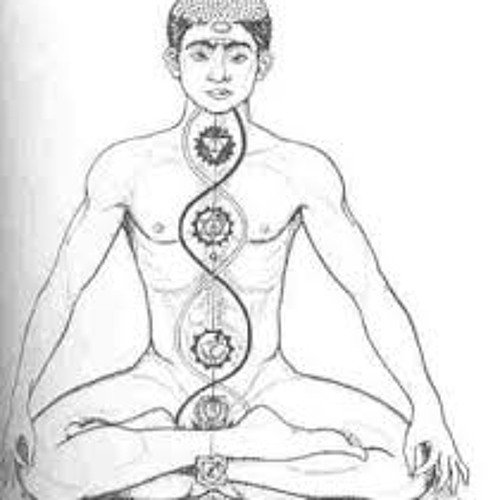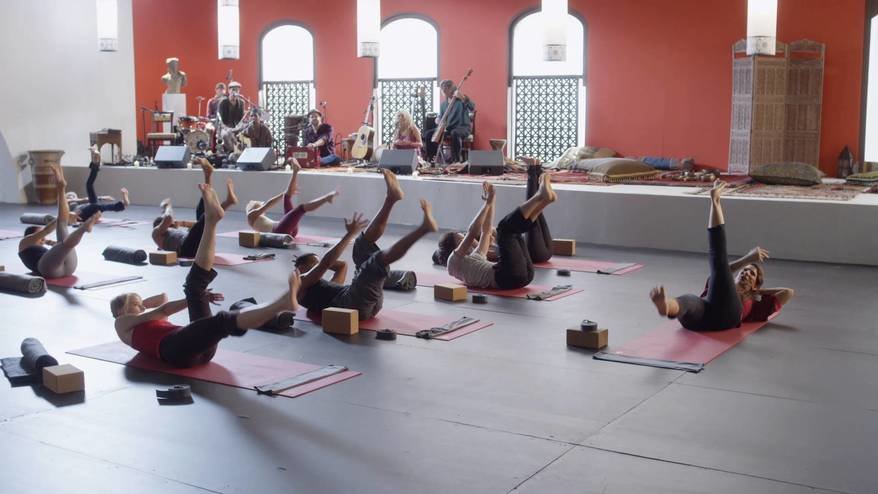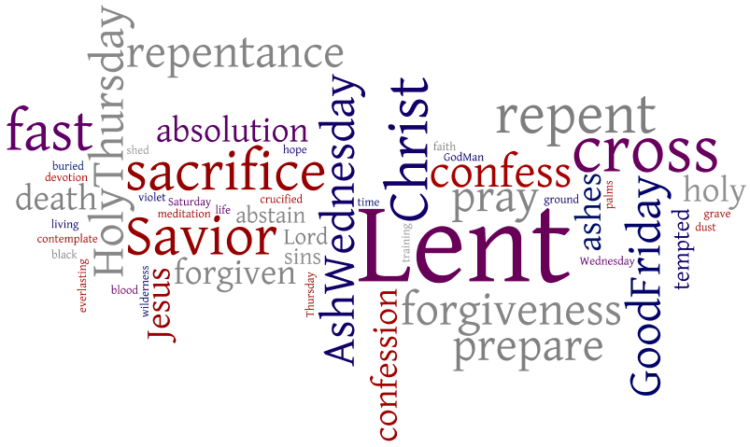Lent begins and ends with the belly. The Gospel reading on the First Sunday in Lent is the story of Jesus fasting in the wilderness and being tempted by the devil. At the end of his fast “he was famished” and the devil said to him, “If you are the Son of God, command these stones to become loaves of bread.” Jesus fought off the temptation by quoting from the Torah (Deuteronomy), “One does not live by bread alone, but by every word that comes from the mouth of God” (Matthew 4:4).
It is important to notice that the temptation by the devil came after Jesus’s forty days of fasting. Nutritional science today studies the relationships between food and mood, diet and detoxification, fasting and mental clarity. These relationships were not known in the first century. But sages, shamans, prophets, and Greek philosophers all engaged in practices of fasting and testify that it brought enlightenment or insight. People today worry that fasting will dull their senses, but in fact it has the opposite, energizing effect. Fasting and hunger actually activate us towards our goal. Jesus’s resolve to stay on track with his mission and not be sidetracked by giving into his own needs was strengthened by his time of fasting, not weakened..

The first temptation of humankind, according to Genesis 3, concerned food. The “forbidden fruit” looked good to the eye and the tempter suggested to our primal parents that eating of it would make them like God, knowing good and evil. Jesus “was famished” and he could have rationalized that turning stone into bread to satisfy his hunger wouldn’t have hurt anybody. But what we call his “gut instinct,” the intelligence of the belly, said otherwise. The temptation is for Jesus to use his power to serve his own needs rather than the needs of others. Once that temptation was given into, other temptations could more easily be given into as well. Maybe the devil wouldn’t have needed to go beyond the first temptation. In the three temptations recorded in the Gospels of Matthew and Luke, the tempter was trying to divert the Son of God from his mission.

At the end of Lent, one of the readings of the Easter Vigil is the story of Jonah in the belly of the fish. It has been a traditional Easter text. Jonah, trying to escape the mission God had given him, sails away. A storm threatened the ship and the lives of the sailors. Jonah realized that God was pursuing him in the storm and told the sailors to throw him overboard to still the storm. When they did as Jonah ordered, he was swallowed by a big fish. He survived in the belly of the fish for three days, which has been used as a figure of Jesus in the tomb for three days. On the third day the fish vomited Jonah out just like the tomb gave up the resurrected Christ on the third day. Both Jonah and the Christ went on to complete their missions.
Just as Jesus listened to the intelligence of his belly, his “gut instinct,” to keep him on track for his mission, so Jonah in the belly of the fish came back to his sense of mission as a prophet of God. After he was spewed out he went straight to Ninevah, that great sinful city, and called it to repentance under threat of God’s judgment, as he Lord had ordered him to do. It had seemed to Jonah like an impossible mission, but in the belly of the fish he returned to his prophetic call to proclaim God’s word.

The Belly as the Source of Life
Our own bellies are challenged by Lent, the great fast. I have written previously in “Frank Answers About Our Problem with Fasting” about the issues of observing the Lenten fast and I won’t repeat them here. Instead, I want to focus on the belly as the basis of our spirituality. We think of spirituality in terms of spiritual issues. But it really begins with physical issues because we are bodily creatures formed from the Earth; we are not angels.
Within our body the navel center is where our life began in the womb of a mother. The embryo grows there. The life-energy is available to the fetus through the navel – the heart and the brain develop later on. The life-energy of the mother becomes available to the child through the navel. The child is connected to his mother’s body through the umbilical cord in his navel. From there the roots spread out into the mother’s body and also in the opposite direction, into the child’s own body as well.

It is to this navel center that we return to check our “gut instinct” in making decisions about the choices we face. We will consult our analytical mind in the brain and the seat of emotions in the heart center, in making those choices. But it is seldom safe to go against our “gut instinct.” Our belly has its own intelligence. This is why the navel is an area of interest in world religions with their fasting practices that may reduce the intake of food and drink down to basics (like bread and water). Fasting is often accompanied by meditation, which is sometimes called “navel gazing.” It is good to focus on the belly as well as the breath in meditation. Focusing on both is accomplished by breathing deeply into the belly. I will mention other breathing techniques below.

Yoga and the Belly
Note: If you don’t do yoga and aren’t interested, scroll down to “Core Strengthening Exercises For a 40-Day Lenten Challenge.”
For those who are interested in yoga, yoga has a great interest in the navel center and the belly. It has developed twisting techniques that aid digestion and wring out the toxins that accumulate in the stomach. Supine spinal twist is one of these poses and it’s my favorite.

In ancient Indian philosophy the chakra (cakra) system was a way of mapping the emotions and intelligences of the body. In the yoga subtle body the lower chakras constituted the energetic centers around the perineum, sacrum, and navel center. These centers root us in the very basics of our existence. The upper chakras centered around the throat, the third eye (brain), and the crown of the head deal with spiritual issues. The heart chakra in the middle bridges the upper and lower chakras (heaven and earth, as it were). (See Frank Answers About Opening the Chakras.)

The three lower chakras relate to the basic issues of our existence. They must be opened before one can move into more spiritual concerns. They deal with issues of security and survival (the root area), creativity/procreation and sexuality (the genital area), and confidence and self-definition (the navel/abdominal area). The navel area is where we make decisions about our mission or purpose in life.
Yoga practices related to the navel center are often done supine on the back and involve engagement of the abdominal muscles that ignite a digestive fire in the belly. The yoga of fire is associated with transformation, just as fire itself can transform matter from solid to liquid to gas. Raising legs up and down is a sure-fire way of igniting a blaze in the belly.

An opposite abdominal pose is locust in which one lays on one’s stomach and lifts up both arms and legs, holding them while breathing into and out of the belly.

Yoga is not just about poses or asanas. It is also about using the breath (prana), not just to empower the asanas but also for cleansing or purifying (kriya) the internal body. Vigorous breathing practices (pranayamas) are also a part of yoga belly work, particularly breath of fire (agni pran) and kapalabhati. In these breathing techniques the breath is powered from the navel and the solar plexus through rapid stomach pumping. The air is vigorously expelled (exhaled) through the nose by pressing the navel back toward the spine. On the inhale, the belly relaxes and the diaphragm flattens down. For kapalabhati, the focus is on the exhale. It should be forceful but not forced. The vacuum created by the exhale will naturally lead to a passive inhale. In breath of fire, one works toward producing inhales and exhales of equal length. This breath can be fast and rigorous but the body stays relaxed.

Another kriya practiced in Hatha Yoga is uddiyana bandha or upward abdominal lock. In this practice the internal organs are pulled upward on a powerful inhale and are retained in a pulled-up position even on exhale. They are locked in place. This serves to massage the internal organs and generate purifying heat. It takes a lot of practice to be able to do this and it is counterindicated for pregnant women or people with high blood pressure.

Lenten Workout
Being in the belly gives us the most direct experience of our existence. Here is where you most fully sense your bodily presence. The gut part of us is teaching us what it means to actually live in the present and feel our existence. This is what gives us a sense of confidence, fullness, and aliveness in the world. In religious language, it’s like feeling held in the presence of God. And it’s like feeling the full gutsy vibrancy of life here and now. In those other energetic areas of the body we can lose that sense of being present to God and to ourselves. We can analyze the past and fantasize about the future in the brain’s memory and the heart’s hope. But not in the gut when it is impacted from within or from the outside. This is why the belly is such an important area of spiritual concern.
My suggestion is that during Lent we focus especially on the belly, both by fasting and by doing exercises that light a fire in the belly. Fasting requires a change of diet and a reduction of meats and sweets. (See Frank Answers About our Problems with Fasting.) A yoga of fire practice can detoxify the digestive organs (see Frank Answers About Yoga Fire). An outcome may be improved health and fitness, but that’s not why we would focus on the belly. We would light a fire in the belly because it’s a center of knowledge and decision-making.

Core Strengthening for a 40-Day Lenten Challenge
Many of my readers don’t practice yoga. Since some of you may engage in fitness practices, what follows are suggestions for core strengthening exercises that can be done at home during the forty days of Lent (Sundays are not “of” Lent; they are “in” Lent and are not fast days.) The point of doing these yoga practices or fitness exercises is to focus on the belly, which is our center of gravity in the body and our connection with life.
Plank Pose is a great pose for a challenge. It’s used in both yoga and fitness workouts. The challenge is to see how long you can hold the pose. How much does the amount of time holding plank increase over 40 days? (I did this challenge between January 1 and February 9, 2019, when I was 76-years-old.)

You will discover things about yourself and your body as you do plank. Plank tones all the core muscles of the body, including abdomen, chest, and low back, as well as glutes, arms, and shoulders. By holding plank regularly you will build up your stamina, endurance, and determination. You can support the plank by resting on your hands and extended arms or by resting on your forearms and elbows, like the man in the following photos (which is the way I did it).

You can vary plank pose by raising or lowering your pelvic area to bring other muscles into play. You can also do a half plank with your knees down. You can also roll over on your sides to do a side plank on each side to give each arm and shoulder a rest.

After holding plank, even in various positions, for several minutes, you need a counter pose. The suggestion would be cobra or bridge (both back bends). I rested in bridge pose, like the man in this photo.

Another core strengther that comes out of fitness training rather than yoga is to do crunches on a stability ball. Balancing on the ball also adds to core strength. How many sit up crunches can you add over the course of Lent’s 40 days?

As a counter stretch use a weight (disk or dumb bell) to pull over your head and stretch your abdominal muscles muscles in the opposite direction of the crunch.

There are a lot of things that can be done on a stability ball that provide stretch and balance while also strengthening the core. I do bench presses on the ball using hand weights. Maintaining balance provided core strengthening while I’m also strengthening pecs, shoulders, and arms.
These patterns of movement and breath compress and heat our belly. We will feel it and that focus on our belly, on our core, may enhance our conscious awareness of our self, of others, of our environment, and of God. These vigorous practices can make us more attentive to other aspects of our Lenten devotion, including the notable duties of fasting, almsgiving, and prayer. But it all begins with a focus on your belly.
Bigorexia: A Warning!
Having said this, I want to note a now-recognized phenomenon of male body eating disorders. While we have known about female eating disorders such an anorexia, there are male eating disorders called bigorexia. It’s a disorder where someone thinks the body is puny and exercises to bulk up. But they don’t consume enough to match the energy they are expending. This can create starvation even in bodies that otherwise seem fit, and it especially affects teenage boys. Starvation can have a deleterious effect on the functioning of body organs. I’m not an expert, but I’ve read about this phenomena and I want to raise a red flag even as I call attention to the relationship of Lent and the belly. Parents, watch what your sons are doing with exercise and eating and how it might affect their mood.
Pastor Frank Senn

Frank Senn
I’m a retired Lutheran pastor. I was in parish ministry for forty years and taught at the Lutheran School of Theology at Chicago for three years. I’ve been an adjunct professor at Garrett-Evangelical Theological Seminary in Evanston, IL. Since my retirement in 2013 I’ve also taught courses at Trinity Theological College in Singapore, Satya Wacana Christian University in Salatiga, Central Java, Indonesia, and Carey Theological College in Vancouver. I have a Ph.D. in theology (liturgical studies) from the University of Notre Dame.
LEAVE A REPLY
Comment*





